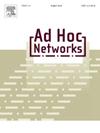为智能无线植入式医疗设备供电:迈向体内自供电物联网
IF 4.4
3区 计算机科学
Q1 COMPUTER SCIENCE, INFORMATION SYSTEMS
引用次数: 0
摘要
由于低功耗电子、传感、无线通信和材料的进步,新一代小型化、低侵入性和智能无线植入式医疗设备(sw - imd)现在可以实现生物标志物的实时监测和实时系统重构。然而,对长期可靠供电的需求,以及支持创新功能的需求,提出了传统电池无法满足的新的供电要求。事实上,电池对植入物的尺寸和寿命有重大影响,并且通常需要每5-10年通过外科手术更换一次,这给患者带来了不适和风险。本文概述了未来医疗植入物供电的两种主要方法,即远程能量传输和能量收集。我们描述了调节能量传递过程的基本物理原理和用于将人类或环境来源产生的能量转化为电能的能量转换机制。我们还提供最先进的技术,领先的远程供电方法,收割机和拾荒器的扩展概述。简要介绍了一些最新的原型和临床可用的设备。对于每种技术,我们讨论了优点和缺点;以及辐射源的安全暴露限制。最后,我们概述了一些需要克服的开放研究挑战,以实现新一代自供电植入式医疗设备。本文章由计算机程序翻译,如有差异,请以英文原文为准。
Powering Smart Wireless Implantable Medical Devices: Toward an internet of self-powered intra-body things
A new generation of miniaturized, less invasive, and Smart Wireless Implantable Medical Devices (SW-IMDs), designed for real-time monitoring of biomarkers and with real-time system reconfiguration can now be realized thanks to advances in low-power electronics, sensing, wireless communications, and materials. However, the need for long-term and reliable power supply, together with the need to support innovative functions, impose new powering requirements that cannot be satisfied by traditional batteries. Batteries have in fact a major impact on the size and lifetime of the implant, and often need to be replaced every 5–10 years through a surgical procedure, causing discomfort and risks for the patient.
This article provides a broad overview of the two main approaches to powering for future medical implants, namely remote energy transfer and energy harvesting. We describe the underlying physical principles that regulate the energy transfer processes and the energy conversion mechanisms used to transform the energy produced by human or environmental sources into electrical energy. We also offer an extended overview of state-of-the-art technologies, leading remote powering methods, harvesters and scavengers. Some of the most recent prototypes and clinically available devices are briefly described as well. For each technology, we discuss advantages and drawbacks; as well as safety exposure limits to the radiating sources. Finally, we outline a number of open research challenges that need to be overcome to enable a new generation of self-powered implantable medical devices.
求助全文
通过发布文献求助,成功后即可免费获取论文全文。
去求助
来源期刊

Ad Hoc Networks
工程技术-电信学
CiteScore
10.20
自引率
4.20%
发文量
131
审稿时长
4.8 months
期刊介绍:
The Ad Hoc Networks is an international and archival journal providing a publication vehicle for complete coverage of all topics of interest to those involved in ad hoc and sensor networking areas. The Ad Hoc Networks considers original, high quality and unpublished contributions addressing all aspects of ad hoc and sensor networks. Specific areas of interest include, but are not limited to:
Mobile and Wireless Ad Hoc Networks
Sensor Networks
Wireless Local and Personal Area Networks
Home Networks
Ad Hoc Networks of Autonomous Intelligent Systems
Novel Architectures for Ad Hoc and Sensor Networks
Self-organizing Network Architectures and Protocols
Transport Layer Protocols
Routing protocols (unicast, multicast, geocast, etc.)
Media Access Control Techniques
Error Control Schemes
Power-Aware, Low-Power and Energy-Efficient Designs
Synchronization and Scheduling Issues
Mobility Management
Mobility-Tolerant Communication Protocols
Location Tracking and Location-based Services
Resource and Information Management
Security and Fault-Tolerance Issues
Hardware and Software Platforms, Systems, and Testbeds
Experimental and Prototype Results
Quality-of-Service Issues
Cross-Layer Interactions
Scalability Issues
Performance Analysis and Simulation of Protocols.
 求助内容:
求助内容: 应助结果提醒方式:
应助结果提醒方式:


